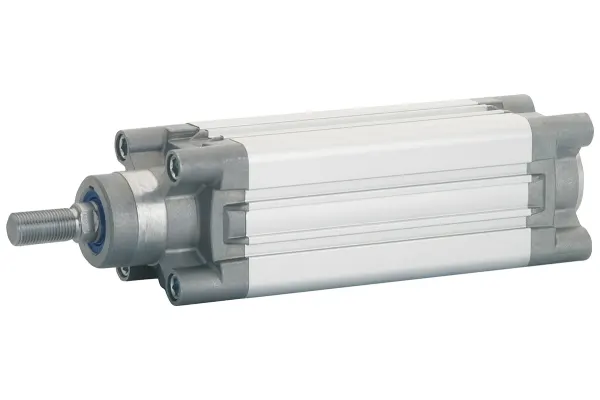NEPA (National Environmental Policy Act) and ISO (International Organization for Standardization) cylinders are widely used in various industries for their reliability and efficiency. These cylinders play an essential role in many applications, from hydraulic and pneumatic systems to heavy machinery. To ensure they continue to function efficiently and last as long as possible, regular maintenance and optimization are critical.
In this article, we’ll provide a simple guide on how to maintain and optimize the performance of NEPA/ISO cylinders, covering key areas such as proper care, routine inspections, and troubleshooting common issues.
1. Understand the Basics of NEPA/ISO Cylinders
Before diving into maintenance and optimization, it’s important to understand the basic function of NEPA and ISO cylinders. These cylinders are designed to convert fluid power (hydraulic or pneumatic) into mechanical energy, allowing machines to perform various tasks like lifting, pushing, or pulling.
NEPA and ISO cylinders are built to meet specific standards for size, pressure capacity, and performance. The main components of these cylinders include:
- Cylinder barrel: Houses the piston and seals the pressurized fluid.
- Piston: Moves within the cylinder to create mechanical force.
- Seals: Prevent fluid leaks and maintain pressure.
- Rod: Connects the piston to the external mechanism.
Keeping these components in good condition is key to ensuring the cylinder functions properly.
2. Regular Inspection and Cleaning
Routine inspection and cleaning are crucial steps to maintain the performance of NEPA/ISO cylinders. Over time, dirt, debris, and contaminants can build up on the cylinder’s surface and internal components, which can affect performance.
Here’s what you should include in your regular inspection:
- Visual inspection
Check the external surface of the cylinder for signs of damage, wear, or leaks. Look for dents, cracks, or corrosion on the cylinder barrel and rod. If you notice any significant damage, it may be time to replace the affected parts.
- Check for leaks
Leaks are a common issue with hydraulic and pneumatic cylinders. Inspect the seals, piston, and rod for any fluid leaks. Leaks can lead to reduced pressure, poor performance, and potential damage to other parts of the system. If you detect a leak, replace the seals or damaged components immediately.
- Clean the cylinder
Use a clean, lint-free cloth to wipe away dust, dirt, and debris from the cylinder. Make sure the cylinder’s rod is free of contaminants, as dirt can cause scratches and wear down the seals over time. For internal cleaning, follow the manufacturer’s instructions to avoid damaging sensitive components.
Regular cleaning and inspection help prevent minor issues from becoming major problems, ensuring that your cylinder continues to perform optimally.
3. Lubrication of Moving Parts
Proper lubrication is essential for reducing friction between the moving parts of the cylinder and preventing premature wear. Lack of lubrication can cause components like the piston and rod to stick, leading to performance issues and potential damage.
When lubricating your NEPA/ISO cylinders:
- Use a lubricant that is compatible with the specific fluid used in your hydraulic or pneumatic system. Make sure it is appropriate for the operating temperature and pressure range of the cylinder.
- Avoid over-lubricating, as excess lubricant can attract dirt and debris, which may lead to clogging and wear.
- Regularly check the lubrication levels, especially in high-use applications. Lubricating the moving parts will help ensure smoother operation and extend the life of the cylinder.
4. Replace Worn or Damaged Seals
Seals play a critical role in maintaining pressure and preventing fluid leaks in both hydraulic and pneumatic cylinders. Over time, seals can wear down or become damaged, leading to reduced performance and efficiency.
Here’s how to handle seal maintenance:
- Inspect seals regularly
During your routine inspections, check the seals for signs of wear, cracks, or damage. If you notice any issues, replace the seals immediately to prevent leaks and maintain optimal pressure levels.
- Use high-quality seals
When replacing seals, choose high-quality products that meet the specifications of your NEPA or ISO cylinder. Using inferior seals can lead to faster wear and more frequent replacements, increasing maintenance costs.
Proper seal maintenance is key to avoiding leaks, maintaining performance, and extending the life of the cylinder.
5. Monitor Pressure and Load Limits
Operating your NEPA/ISO cylinder within its pressure and load limits is crucial for maintaining its performance. Exceeding these limits can cause significant damage to the cylinder and the overall system, leading to costly repairs or replacements.
To prevent overloading:
- Check the manufacturer’s specifications
for the maximum pressure and load capacity of your cylinder. Never exceed these limits.
- Install pressure gauges
to monitor the operating pressure of your system. This allows you to detect any pressure fluctuations that could damage the cylinder.
- Avoid sudden pressure spikes
Rapid changes in pressure can place stress on the cylinder and its components. Gradually increase and decrease pressure to prevent shocks to the system.
Maintaining the proper pressure and load limits helps avoid unnecessary strain on the cylinder, ensuring it operates efficiently and lasts longer.
Conclusion
Maintaining and optimizing the performance of NEPA/ISO cylinders is essential for ensuring long-term reliability and efficiency. Regular inspections, proper lubrication, monitoring pressure levels, and addressing alignment issues are key steps to keep your cylinders functioning at their best. By following these simple maintenance tips, you can extend the life of your cylinders, improve performance, and reduce the risk of costly repairs or replacements. Thank visiting readpots.com

